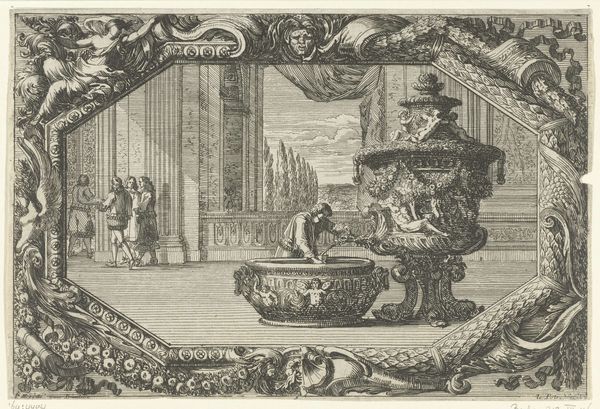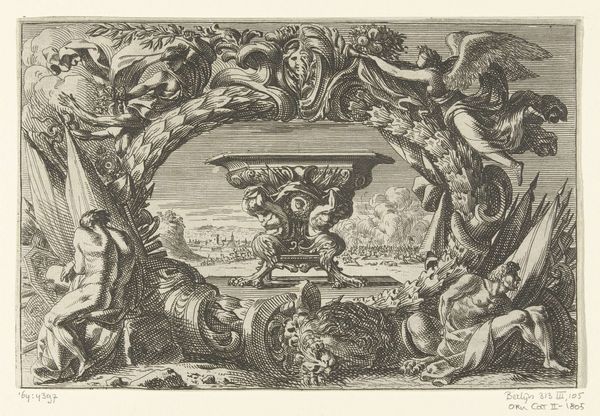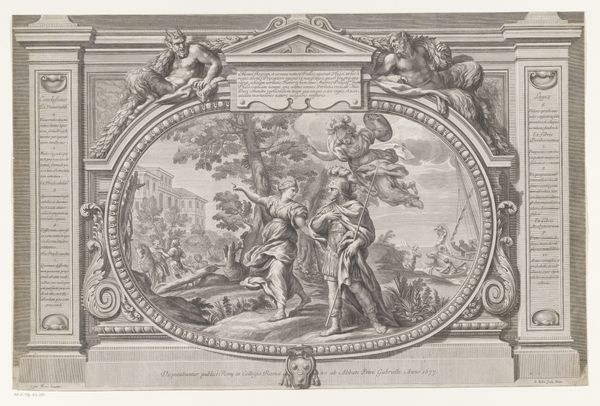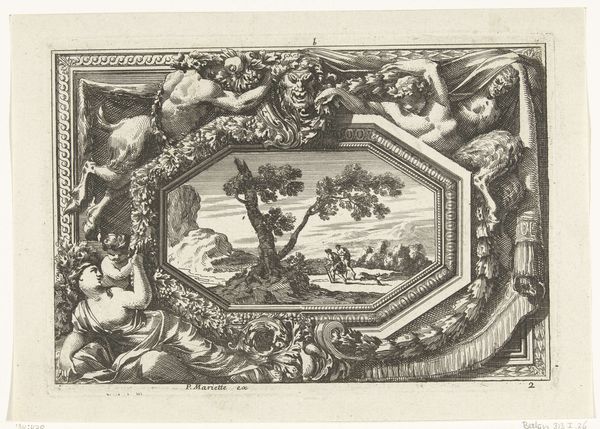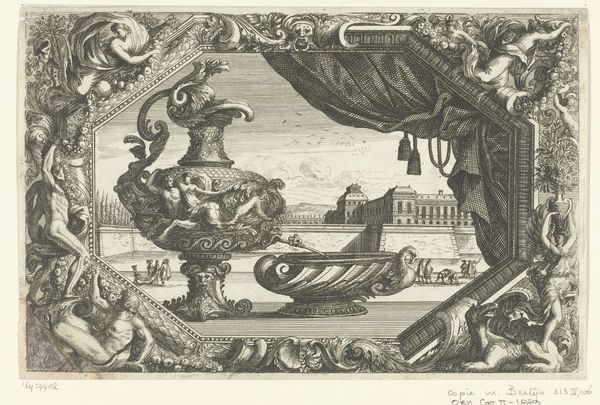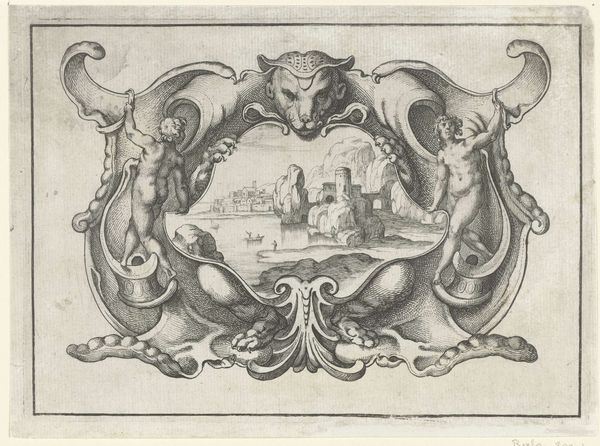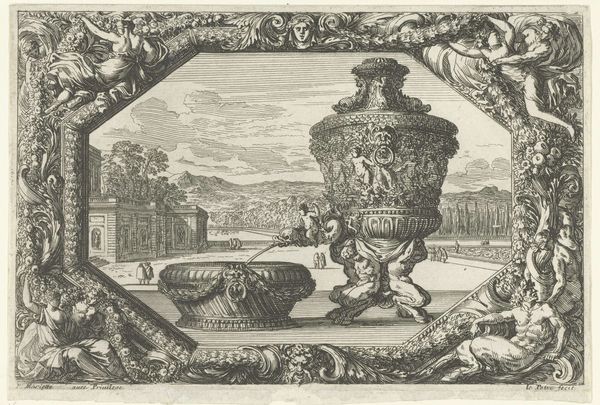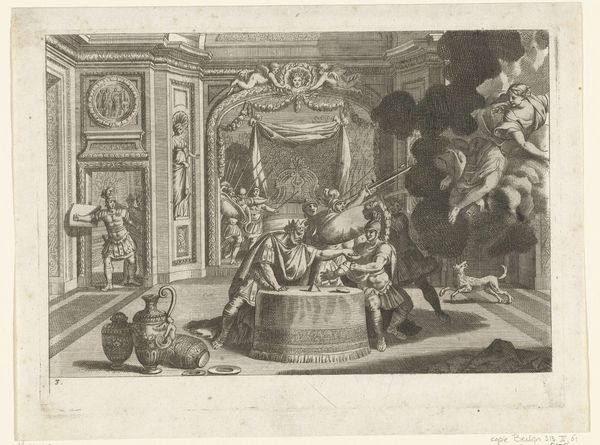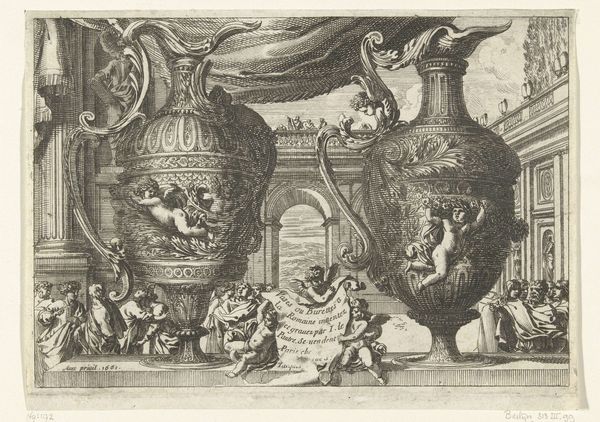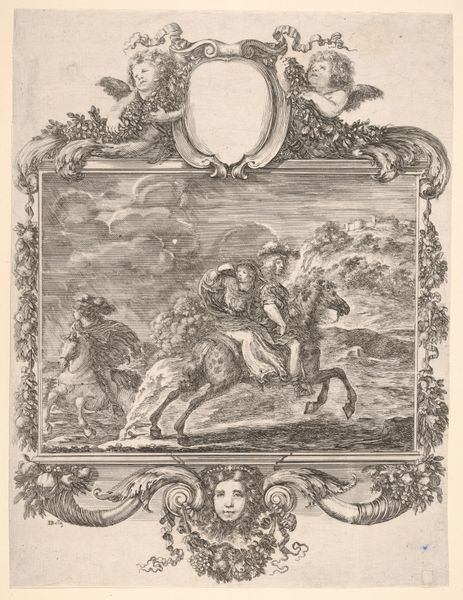
print, etching, engraving
#
baroque
#
pen drawing
# print
#
etching
#
landscape
#
figuration
#
engraving
Dimensions: height 145 mm, width 222 mm
Copyright: Rijks Museum: Open Domain
Curator: Let’s turn our attention to this intricate print, "Bassin en mobiele waterfontein in cartouche" by Jean Lepautre, created sometime between 1657 and 1661. Editor: Wow, it’s like peering into a Baroque dream! All those figures crammed in – it feels opulent, maybe even a bit dizzying. The heavy ornamentation and cartouche, they feel simultaneously enclosing and…expressive. Curator: Absolutely. The print is a masterful display of Baroque aesthetic, evident in the dramatic use of detail and ornamentation. We see, of course, the cartouche framing the image—that decorative frame—a flourish of sculptural figures, foliage, and even portrait medallions. These all function symbolically, speaking to power and artistic refinement of the time. Editor: Right. The main image presents the rituals performed with a grand fountain, as it pours life into what is perhaps a baptismal font or an ablution basin. The secondary framing devices show it in relationship to a classical scene reminiscent of a landscape in antiquity, which provides this artwork with a grounding effect. There's something about the water flowing that just gives this overwhelming sense of renewal! I feel clean just looking at it! Curator: Indeed! Water holds immense symbolic weight. From cleansing to the source of life itself, it's a vital symbol that crosses cultures and time periods. In this era, fountains also symbolized wealth, control over nature, and even divine grace. You also must account for Lepautre’s technical skill. Look closely, notice how the fine lines create depth, shadow and texture with surprising skill. Editor: Agreed. Though I can't help thinking… what did people really do with these fountains? They're so ornate; you almost couldn't bear to dirty them. They seem almost…too good for practical use. Curator: The reality could often be a spectacle of courtly life, expressions of royal power, and perhaps as Lepautre saw them—as the symbolic expression of eternal forces. It gives context to the function of image, to represent and elevate life to an experience greater than its simple use. Editor: You know, I get that feeling here, gazing back into a moment of historical reverence and imagined fantasy. So I feel more aware and inspired to build my own relationship with my life. Curator: I appreciate the invitation for personal meaning with historical awareness. That to me is what allows us to better engage with the enduring narratives of these enduring artworks.
Comments
No comments
Be the first to comment and join the conversation on the ultimate creative platform.

